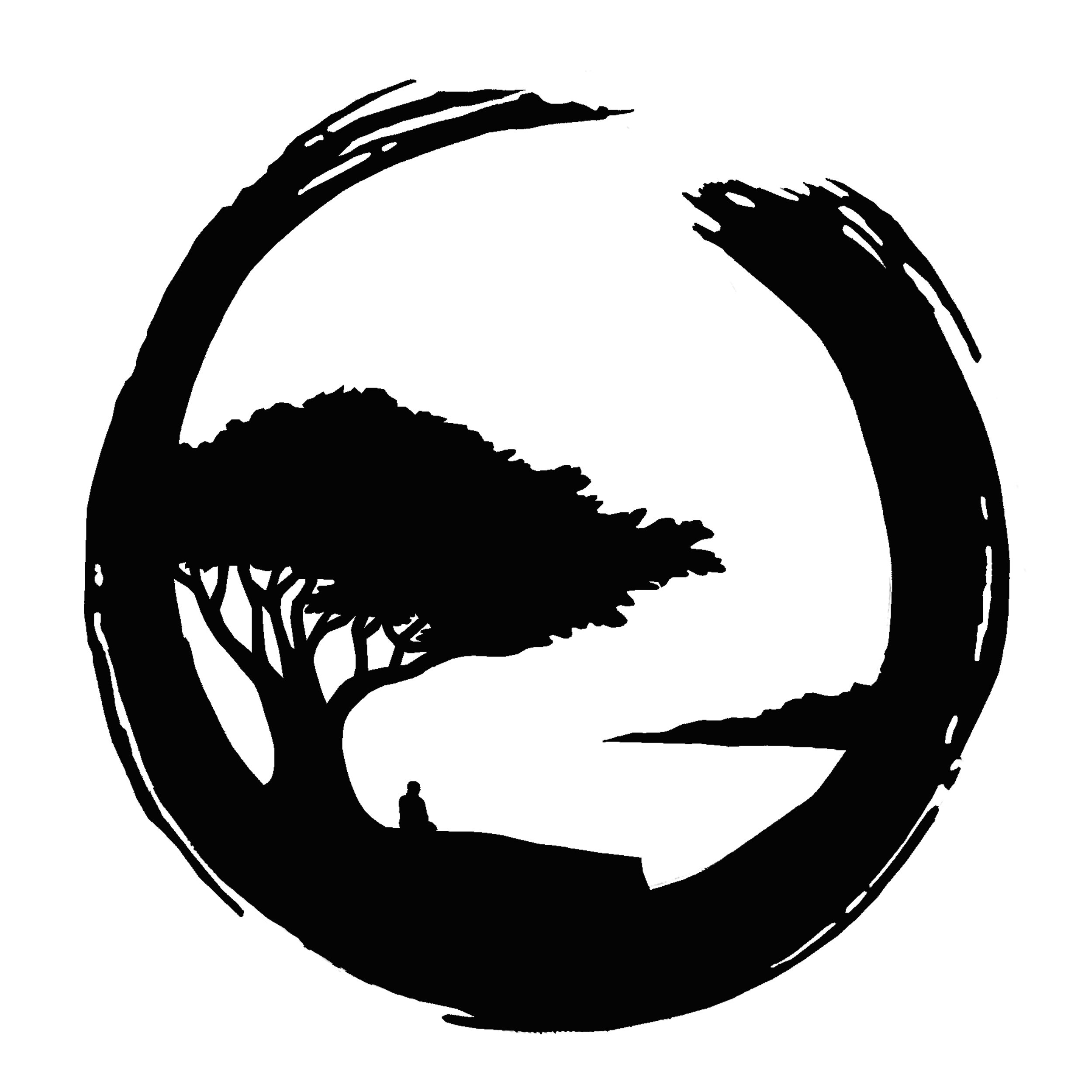Each Grass and Every Circumstance
by Robert Reese
Learn to appreciate each and every grass and each and every circumstance; strive to enable all these things to manifest in the deepest (and fullest) way. Viewing all things in this way is the first step in practice.
Uji, (Living Time)
Eihei Dogen Zenji
translated by Daitsu Tom Wright
In December, some places in Carmel Valley appear as Deep Time. Bursts of fall colors line the dark corridor of Garza Canyon, giving way to the somber hues of the valley floor. Sycamore leaves colored amber and cinnamon bleed into rust, auburn and rose. From a distance, human habitation seems to vanish. The smooth rolling hills climb abruptly from the Carmel River, where on certain mornings the oaks and buckeyes appear caught in mist amid the roughness of their branches. Fire-colored dragon flies gleam in the dry stubble and above the sparkling river. The Carmel River is speckled with fallen leaves, and flocks of small birds snap wings on the blue sky as they wheel to the east. A fresh wind down the valley makes a rushing sound in the oaks and sycamores.
Early in the day, the absence of sound reveals a hidden narrative in the landscape that communicates in a different language. Once we don’t directly turn what the senses convey into language and the syntactical framework, there’s a chance for minor details to remain alive in the forefront of an impression, where, later, they extend the consequence of an experience.
For example, if I encountered a flock of geese resting near the river, I would tend to focus almost exclusively on the geese. The original residents of this valley, on the other hand, might concentration on the part of the world of which, at that moment, the geese were only a fragment of the tableau. The geese would be understood in the context of the river, trees, season and habitat. Native Americans might situate the geese within the environment and back and forth. As they noticed animal smells in the air, or listened for birdsong or the sound of dry brush swishing, they extend the moment of encounter with the geese backward and forward in time. Their framework for the phenomenon, one that I might later shorten just to ‘seeing the geese’, was larger than mine; and where my temporal boundaries for the event would normally consist of little more than the moments of the encounter itself, theirs included the time before they arrived, as well as the time after they left. For me, the geese was a noun, the subject of a sentence; for them, it was a verb, the gerund ‘geesing’.
In his commentary on Being Time, Kosho Uchiyama Roshi writes` “everything that exits on the ground of the very life of this jiko. (all inclusive self prior to the split between self and other). Regardless of what we try to look at, or what realm we wish to experience, everything exits on the ground of the very life of jiko. So there is nothing—no blade of grass, no phenomenon—that does not unfold within the life of a world inclusive of me.”
Two lessons might be gathered from this teaching about how to be more fully present in an encounter with the natural world. Mainly, we need to append that we are entering events as they are unfolding. The activities of geese and wind, trees and sky began before I arrived and would continue unfolding when I left. At the same time, we are unfolding and changing, as well. We are in the midst of transition, both inside and out. Second, the event itself could not be fully defined by referencing exclusively the physical geography in those moments. For example, I might not recall something I’d seen a half-hour before, a bird’s print in the soft mud at the edge of the river.
My approach was mostly to take note of objects in the scene – the geese, the dark rocks at the bottom of the river, the winter vegetation, the afternoon sky—a series of dots, which I would try to make sense of by connecting them all with a single line. Dogen’s attitude situates the practioneer within a dynamic, co-dependent arisen event. Also, unlike myself, Dogen has no immediate need to resolve it into meaning. His approach is to let it continue to unfold. To notice everything and to let whatever significance to emerge in its own time without preference for understanding or not understanding.
Sometimes there is understanding (of a situation), sometimes there isn’t. At times we comprehend what a blade of grass is, at other times, we don’t.
“In Zokai Zenji Shiki, we find, ‘This is not limited to understanding or lack of it. Sometimes there is delusion, sometimes there is none. Sometimes we have true realization, at other times, we have none.’ Delusion and realization are not separate categories. Both are simply different scenery on the ground of jiko,” writes Uchiyama Roshi.
If the first teaching in learning how to see more profoundly into wildlife and to resist the impulse to stand apart from the occurrence, to instead stay within the event, the second message, was to notice how often we accede to the decrees of the mind.
Along the river a small hawk, pearl mantled with fluffed breast, unconcerned with delusion or realization, dives through the valley in fading oak tree light and vanishes into the blackness of trees.
